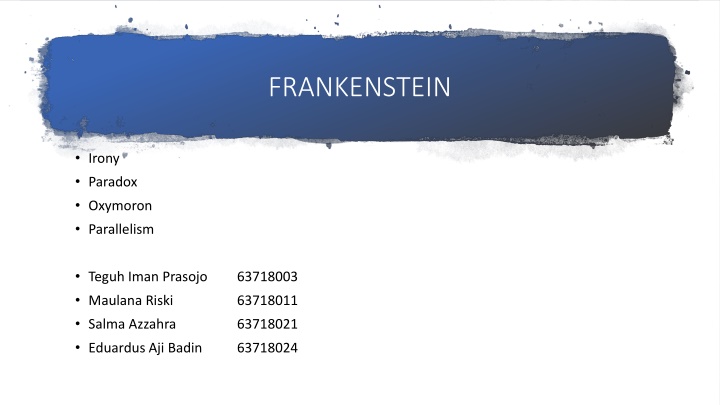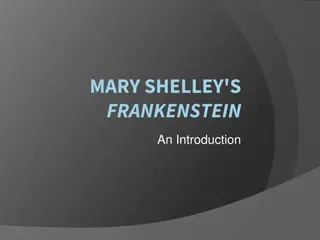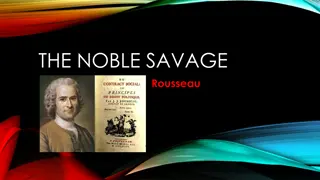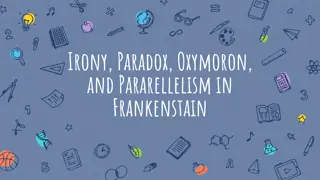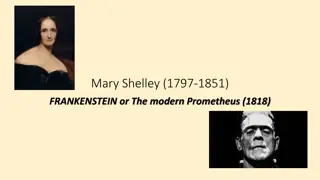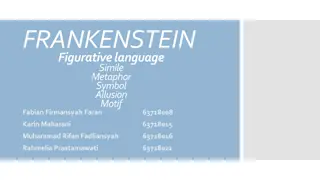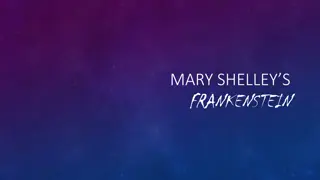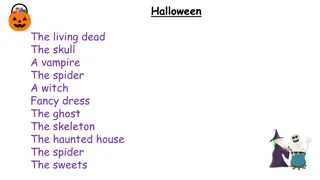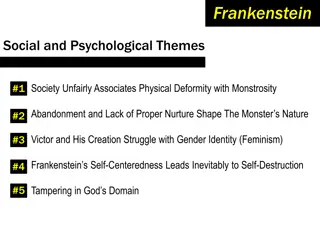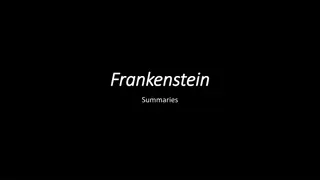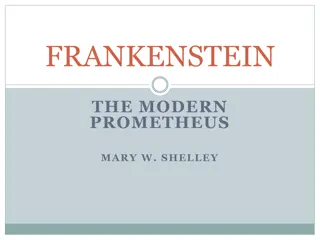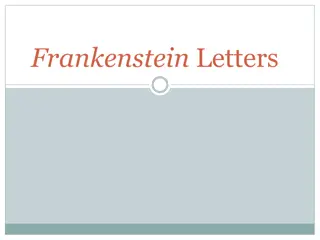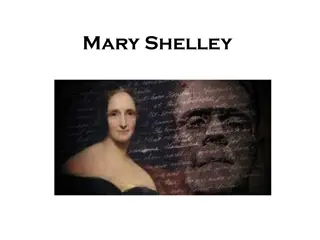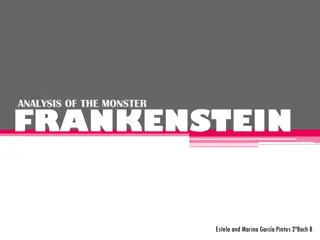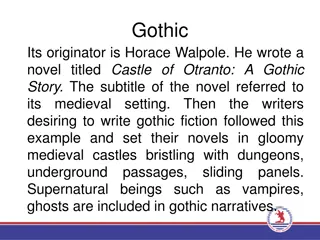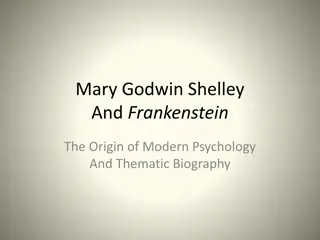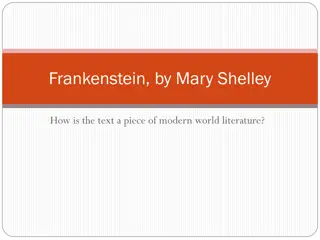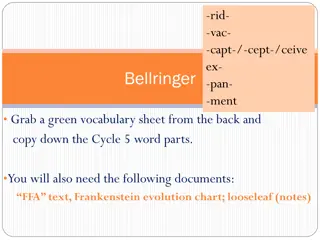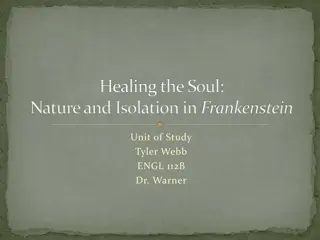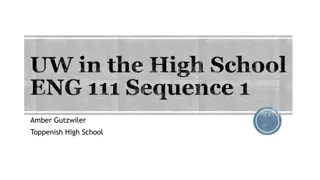FRANKENSTEIN
In Mary Shelley's "Frankenstein," examples of irony, paradox, and oxymoron can be found, adding depth and complexity to the narrative. From hidden meanings to contradictory statements, these literary devices enhance the themes and character developments in the novel, creating a multi-layered reading experience. Explore how irony, paradox, and oxymoron are skillfully woven into the fabric of "Frankenstein," inviting readers to delve deeper into the intricacies of Shelley's classic work.
Download Presentation

Please find below an Image/Link to download the presentation.
The content on the website is provided AS IS for your information and personal use only. It may not be sold, licensed, or shared on other websites without obtaining consent from the author.If you encounter any issues during the download, it is possible that the publisher has removed the file from their server.
You are allowed to download the files provided on this website for personal or commercial use, subject to the condition that they are used lawfully. All files are the property of their respective owners.
The content on the website is provided AS IS for your information and personal use only. It may not be sold, licensed, or shared on other websites without obtaining consent from the author.
E N D
Presentation Transcript
FRANKENSTEIN Irony Paradox Oxymoron Parallelism Teguh Iman Prasojo Maulana Riski Salma Azzahra Eduardus Aji Badin 63718003 63718011 63718021 63718024
In most of the modern critical uses of the term irony, there remains the root sense of dissembling, or of hiding what is actually the case; not, however, in order to deceive, but to achieve special rhetorical or artistic effects. (M. H. Abrams) IRONY
Examples of Irony It grieves me much, replied the Peer again, Who speaks so well should ever speak in vain.
Examples of Irony in Frankenstein We travelled at the time of the vintage and heard the song of the labourers as we glided down the stream. Even I, depressed in mind, and my spirits continually agitated by gloomy feelings, even I was pleased. (Page 188) I shall be with you on your wedding-night (Page 206)
A paradox is a statement which seems on its face to be logically contradictory or absurd, yet turns out to be interpretable in a way that makes sense. (M. H. Abrams) Paradox
Example of Paradox You have to be cruel to be kind.
Example of Paradox in Frankenstein I shall ascend my funeral pile triumphantly and exult in the agony of the torturing flames (page 277) My spirit will sleep in peace (277)
If the paradoxical utterance conjoins two terms that in ordinary usage are contraries, it is called an oxymoron (M. H. Abrams) Oxymoron
Examples of Oxymoron An example is Alfred, Lord Tennyson s O Death in life, the days that are no more. Oxymoron in here is I burn and freeze, because, burn and freeze is contraries one each other
Examples of Oxymoron in Frankenstein The result of which deprived them of their fortune and condemned them to a perpetual exile from their native country (chapter14 page: 148) yg oxymoron nya fortune and condemned I bore the extremes of heat and cold with less injury to my frame (chapter 13 page 141) Everywhere I turn I see the same figure her bloodless arms and relaxed form flung by the murderer on its bridal bier. ( chapter 23 page 241) oxymoron word : Bridal bier
Parallelismthat is, a similar word order and structure in their syntax. (M. H. Abrams) Parallelism
Example of Parallelism By force to ravish, or by fraud betray.
Example of Parallelism in Frankenstein I ordered it to be repaired, bought some furniture, and took possession, (Page 199) No father had watched my infant days, no mother had blessed me with smiles and caresses (Page 142)
References Abrams, M. H., & Harpham, G. (2011). A glossary of literary terms. Cengage Learning.
